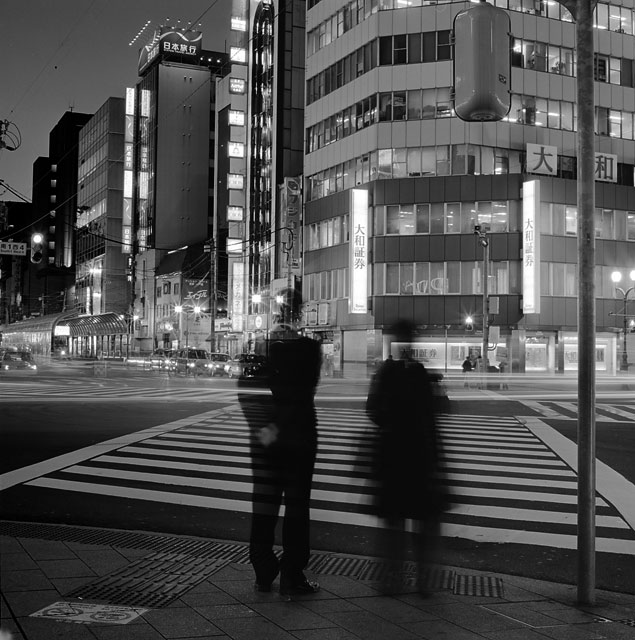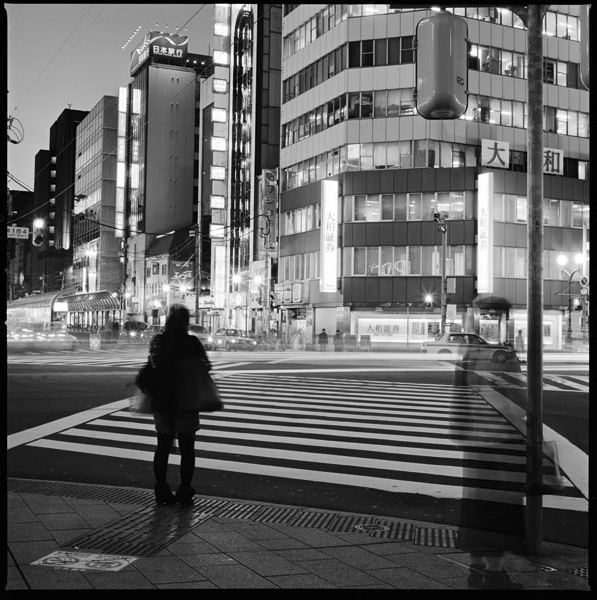Stuart Richardson
Active member
Thanks Scott, glad you liked them!
Greg -- Well, this is good news in a way. Your film should not look like this, so if things are fixed, you should be able to get good results. I am not sure exactly what is wrong here, but part of it may be sharpening in the scanner. When scanning, you want to make sure that all the sharpening in the scanner program is turned off. Scanners do not sharpen well, certainly not as well as photoshop. So it is best to turn off all processing tools that the scanner software may have.
Try to scan as flat as possible, while still setting the black and white points at the edge of usable information. (i.e. don't set the black and white points at 0 and 255 if the information only starts at 25 and stops at 215, but don't clip black and whites yet...you can do that in photoshop). Make sure that all dust and scratches programs and ICE are off with black and white film -- the silver clumps can interfere with the IR beam, and lead to weird effects.
Another possibility here is that your films have been reticulated. This can occur when there are large temperature changes during processing. It has the effect of exaggerated grain in subtle cases and an actual cracked appearance in extreme cases. What happens is the emulsion of the film swells and becomes very delicate when it is wet. If the temperature changes a lot (say 10 degrees or more) rapidly, it can rapidly shrink the film base, thereby cracking the emulsion. An easy way to do this would be to process your film at a normal temperature (or even a warmer than normal temperature) and then wash it straight from the cold water tap. Depending on where you live, this can be much colder. For example, I process at 68 degrees, but the cold water from my tap is around 50 degrees. If I were to wash my film in the cold water, direct from processing, it would result in reticulation.
http://micro.magnet.fsu.edu/primer/photomicrography/bwprocessingerrors.html
This page is a good reference of black and white processing problems.
I have a feeling it is probably more the scanning technique than the negative though. If you have a microscope or strong loupe, you might be able to verify if the negative is finely grained. A better thing to do would be to find a friend or lab that you know does good black and white scans, and see if when they scan your neg, that the results are good.
Finally, the easiest thing to do is probably just to go to your lab and say and tell them you are concerned that the negs might be processed improperly, and would like them to tell you how they process (what chemicals etc) and if they have a scanner or system where they can verify that they are done correctly. If you are using a professional lab, they should have no problem doing this. Just don't make it accusatory and they shouldn't have a problem with it.
Greg -- Well, this is good news in a way. Your film should not look like this, so if things are fixed, you should be able to get good results. I am not sure exactly what is wrong here, but part of it may be sharpening in the scanner. When scanning, you want to make sure that all the sharpening in the scanner program is turned off. Scanners do not sharpen well, certainly not as well as photoshop. So it is best to turn off all processing tools that the scanner software may have.
Try to scan as flat as possible, while still setting the black and white points at the edge of usable information. (i.e. don't set the black and white points at 0 and 255 if the information only starts at 25 and stops at 215, but don't clip black and whites yet...you can do that in photoshop). Make sure that all dust and scratches programs and ICE are off with black and white film -- the silver clumps can interfere with the IR beam, and lead to weird effects.
Another possibility here is that your films have been reticulated. This can occur when there are large temperature changes during processing. It has the effect of exaggerated grain in subtle cases and an actual cracked appearance in extreme cases. What happens is the emulsion of the film swells and becomes very delicate when it is wet. If the temperature changes a lot (say 10 degrees or more) rapidly, it can rapidly shrink the film base, thereby cracking the emulsion. An easy way to do this would be to process your film at a normal temperature (or even a warmer than normal temperature) and then wash it straight from the cold water tap. Depending on where you live, this can be much colder. For example, I process at 68 degrees, but the cold water from my tap is around 50 degrees. If I were to wash my film in the cold water, direct from processing, it would result in reticulation.
http://micro.magnet.fsu.edu/primer/photomicrography/bwprocessingerrors.html
This page is a good reference of black and white processing problems.
I have a feeling it is probably more the scanning technique than the negative though. If you have a microscope or strong loupe, you might be able to verify if the negative is finely grained. A better thing to do would be to find a friend or lab that you know does good black and white scans, and see if when they scan your neg, that the results are good.
Finally, the easiest thing to do is probably just to go to your lab and say and tell them you are concerned that the negs might be processed improperly, and would like them to tell you how they process (what chemicals etc) and if they have a scanner or system where they can verify that they are done correctly. If you are using a professional lab, they should have no problem doing this. Just don't make it accusatory and they shouldn't have a problem with it.


